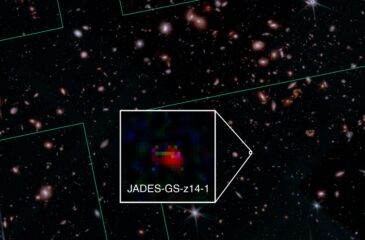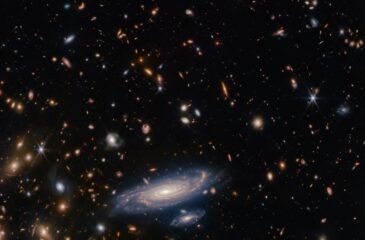Post Tagged with: "Galaxies"
-
James Webb discovers record-distant galaxy, again
Once again, the James Webb Space Telescope has expanded our cosmic frontiers: With the confirmation of two galaxies seen around 300 million years after the Big Bang, we are now closer than ever before to the epoch of the formation of the first galaxies. More than just another record, the galaxies are extremely bright, forcing us again to reconsider our knowledge of how structure forms in the Universe.
-
James Webb opdager rekordfjern galakse, igen
Endnu engang har rumteleskopet James Webb udvidet vores kosmiske grænse: Med bekræftelsen af to galakser set omkring 300 millioner år efter Big Bang er vi nu tættere end nogensinde før på epoken for skabelsen af de første galakser. Mere end blot en ny rekord, er galakserne ekstremt klare, og tvinger os dermed til at genoverveje vores viden om, hvordan struktur dannes i Universet.
-
Invisible Galaxies, Through a Scientist’s Eyes
Glimpsing into the galaxies of the past: that is the daunting task that students from the University of Copenhagen have undertaken by analysing so-called Lyman-α emission. While this radiation, stemming from hydrogen, is difficult to observe, investigating alternative quantities from light spectra can depict a more accurate representation of early galaxies and their characteristics.
-
Astronomers discover newborn galaxies with the James Webb Space Telescope
With the launch of the James Webb Space Telescope, astronomers are now able to peer so far back in time that we are approaching the epoch where we think that the first galaxies were created. Throughout most of the history of the Universe, galaxies seemingly tend to follow a tight relation between how many stars they have formed, and how many heavy elements they have formed. But for the first time we now see signs that this relation between the amount of stars and elements does not hold for the earliest galaxies. The reason is likely that these galaxies simply are in the process of being created, and have not yet had the time to create the heavy elements.
-
-
-
-
-
-




